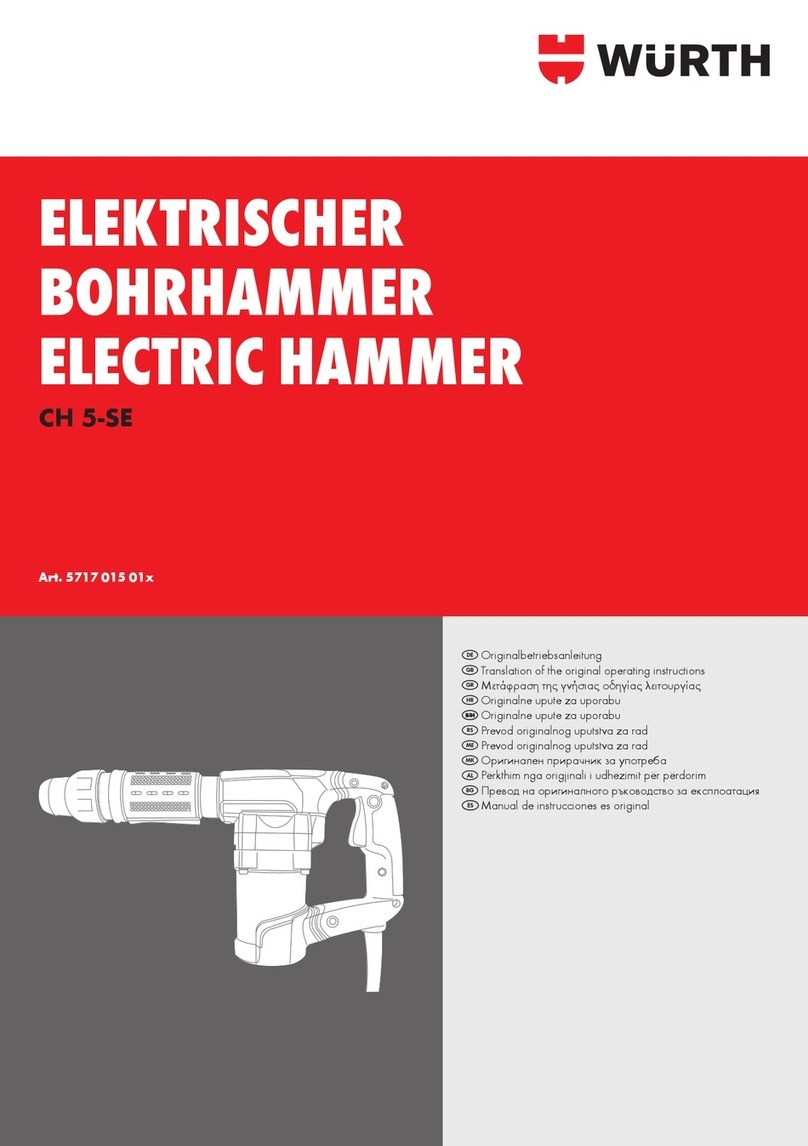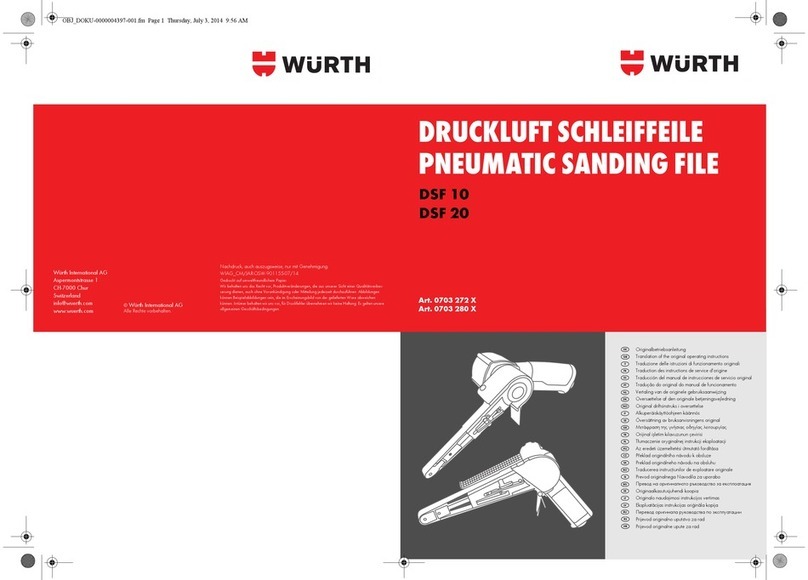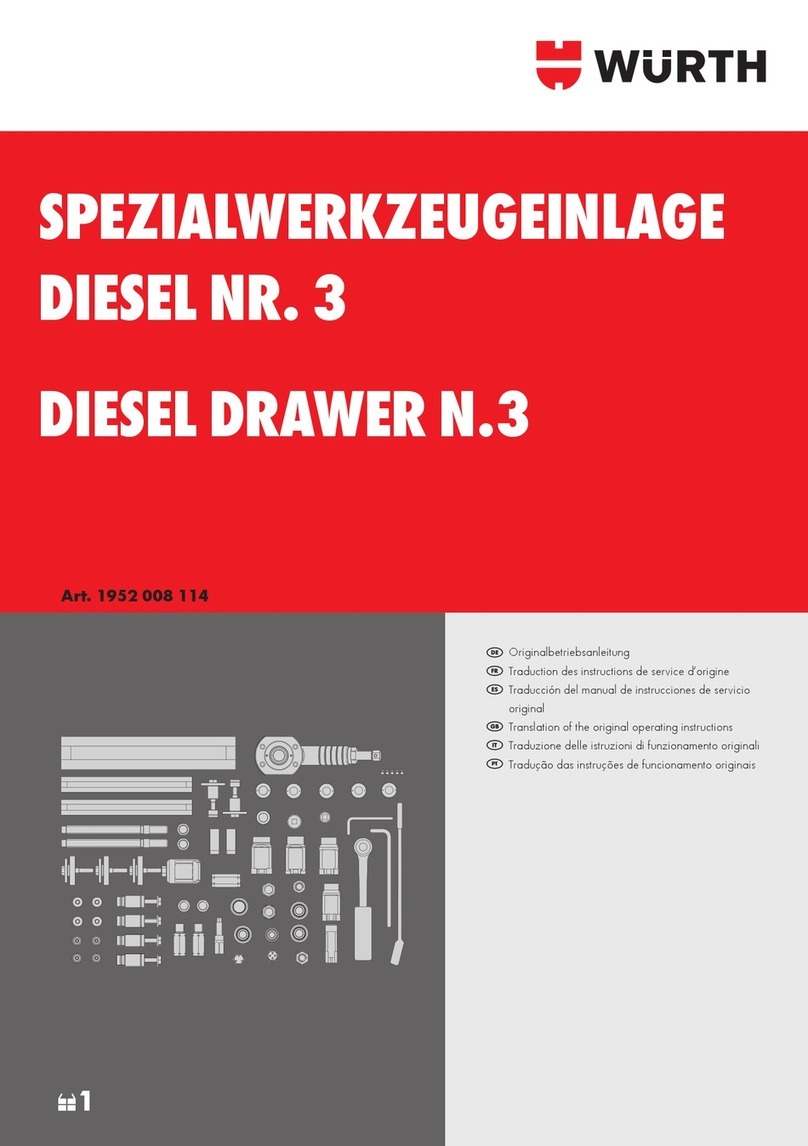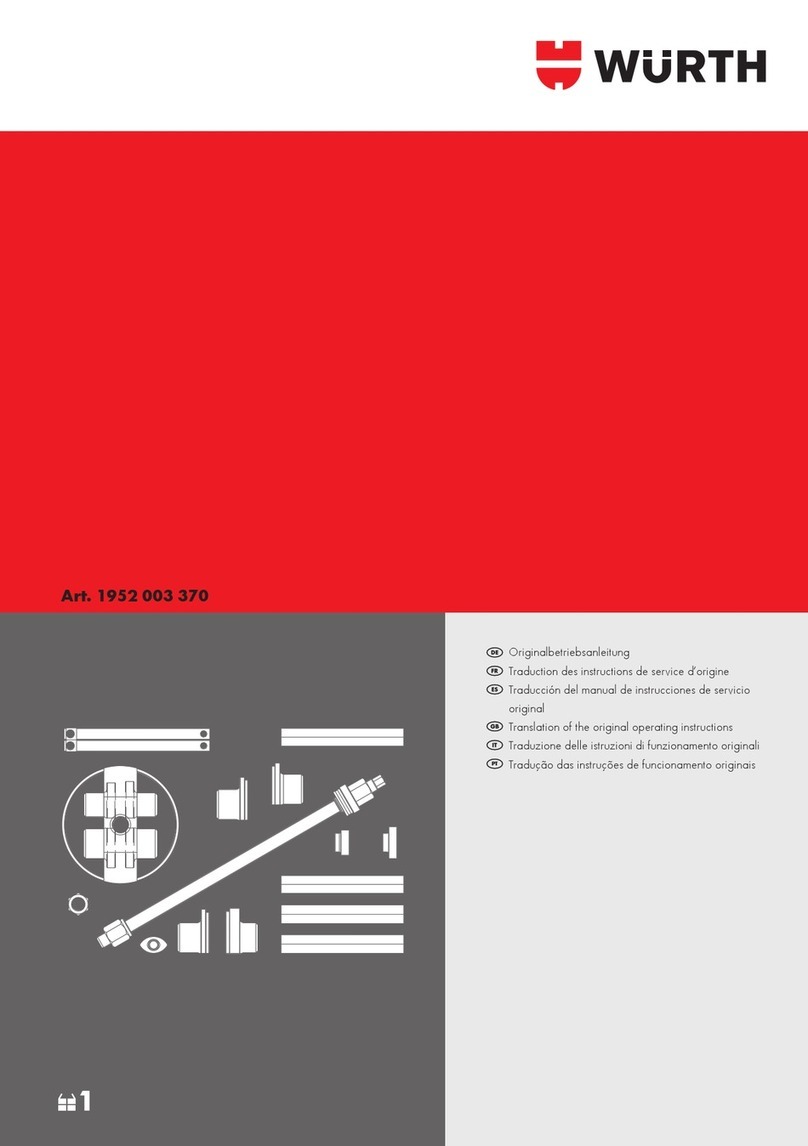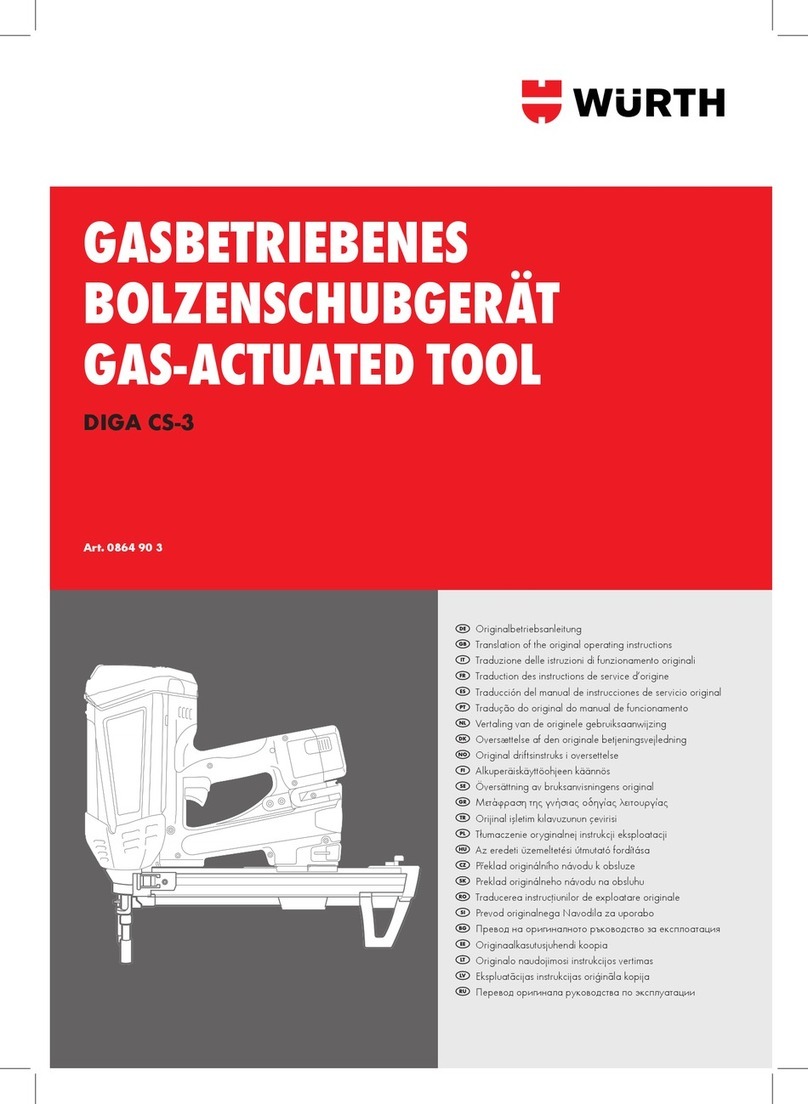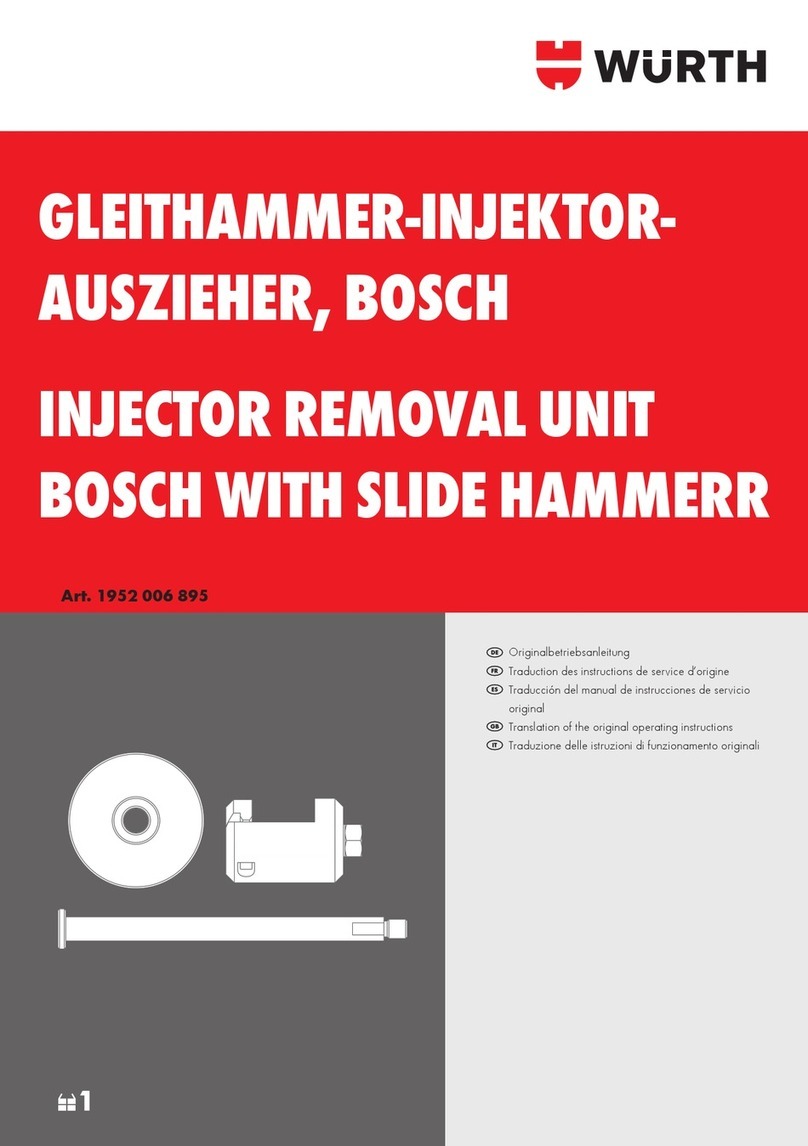
6
Das Scheibenaustrenngerät ist zum Entfernen von
Fahrzeugscheiben an Kraftfahrzeugen bestimmt.
Für Schäden bei nicht bestimmungsgemäßen
Gebrauch haftet der Benutzer.
• Scheibenkleber lässt sich in warmem Zustand
leichter durchtrennen. Ggf. das Fahrzeug vorher
in der Werkstatt auf Raumtemperatur bringen.
• Entfernen Sie alle Abdeckungen, Zierleisten oder
Dichtungen vom Scheibenrahmen.
• Ggf. Innenspiegel und elektrische Anbauteile
entfernen.
• Reinigen Sie die Scheibe, damit die Saugteller auf
einem Schmutzlm nicht rutschen können.
• Schützen Sie das Armaturenbrett, Lenkrad sowie
die Mittelkonsole mit Protektoren oder Schutz-
decken, sollte sich das Gerät unbeabsichtigt von
der Scheibe lösen.
• Entfernen Sie die Schutzabdeckungen der Saug-
teller und setzen Sie diese nach Gebrauch wieder
auf.
A Mit der Drahtsonde 6 vom Fahrzeuginnenraum
die Kleberaupe durchstechen. Wenn möglich, an
einer Stelle wo sich an der Karosserie eine
Einhängemöglichkeit für die Drahtxierung bietet.
Ggf. den Rahmen mit einem Klebeband
schützen.
B Das Ende vom Schneidedraht 2 oder Schneide-
faden 3 durch die Bohrung der Drahtsonde 6
fädeln und eine kleine Schlaufe am Ende anbie-
gen. Die Drahtsonde vorsichtig mit dem Schnei-
dedraht in den Innenraum ziehen. Die Drahtlän-
ge im Innenraum sollte 1 x Scheibendiagonale
betragen.
Bestimmungsgemäßer Gebrauch
Arbeitsvorbereitung
Arbeitshinweise
C Den Schneidedraht 2 oder Schneidefaden 3 von
außen um die Scheibe herumlegen. Darauf
achten, dass der Draht/Schnur unterhalb der
Scheibenkante an der Kleberaupe gut anliegt.
D Den Schneidedraht/Schneidefaden an einer
geeigneten Stelle mit Hilfe des Fixierhakens 5
befestigen. Den Draht 2 oder Schnur 3 möglichst
nicht von der Rolle abtrennen. Dies ermöglicht
ein eventuelles Nachziehen des Schneidedrahts,
sollte dieser reißen.
E Platzieren Sie das Scheibenaustrenngerät unten
rechts in der Ecke der Scheibe und betätigen den
Pumpkolben bis die rote Ringmarke nicht mehr zu
sehen ist.
Achten Sie stets, dass die rote Ring-
markierung der Pumpen nicht hervor-
treten und pumpen sie ggf. nach.
F Das Drahtende in Pfeilrichtung durch die Bohrung
der Spule führen und das Ende umlegen.
G Mittels des Ratschenhebels die Spule in darge-
stellter Pfeilrichtung drehen, um den Schneide-
draht aufzuspulen. Schalten Sie hierzu die
beiden Ratschenumschalthebel auf 0 (siehe K).
Aufgrund der Zugspannung durchtrennt der
Schneidedraht die Kleberaupe. Setzen Sie stets
den Protektor 4 ein, um Innenverkleidungen vor
dem Schneidedraht zu schützen.
H Bei erreichen des Drahtwinkels αvon mehr als
80° zur Schneidrichtung, muss das Scheibenaus-
trenngerät in die nächste Ecke versetzt werden.
Dazu beide Ratschenumschalthebel auf Stellung
neutral umschalten. Damit die Spule und der
Ratschenhebel entriegelt sind, und der Draht/die
Schnur nachgezogen werden kann.
I Das Scheibenaustrenngerät von der Scheibe
lösen. Hierzu die Zuglasche des Saugtellers
anheben damit das Vakuum entweichen kann.
Jetzt das Scheibenaustrenngerät in die nächste
Ecke positionieren und Saugteller durch Pumpen
an der Scheibe befestigen.
BDA_Scheibenaustrenn-Set_Basic.indd 6 11.09.14 17:34
